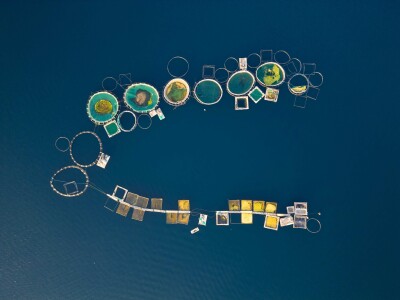When routine goes awry
From U.S. Coast Guard reports
The skipper and two deckhands of a 35-foot gillnetter loaded 2,000 pounds of ice and headed south off the Southern California coast for a nearshore white sea bass trip.
Sometime a little after 8 p.m., the swell was running on the boat’s stern at around 4 feet. There was nothing remarkable about the conditions, but the skipper deployed the port and starboard “birds” to improve the ride. About half an hour later, they prepared to start fishing.
The skipper gave the word to deploy the net cage to prevent fouling of the prop by the net. He then told the deckhand stationed aft to start setting the driftnet. The deckhand had payed out 100 to 150 feet of net through the transom-mounted net roller when he noticed there was more than a little water on deck. He called the skipper’s attention to it, but he couldn’t see over the 6-foot-high net reel, so he came out of the wheelhouse, looked down the starboard side and found the deckhand standing knee-deep in water. He activated the hydraulic motor controls and told the deckhand to retrieve the net.
The skipper returned to the wheelhouse and attempted to alter course, but the helm was sluggish, and the vessel wasn’t responding. He looked back down the starboard side and saw that the deck was awash, the gillnetter was noticeably down by the stern, and the vessel’s speed was dropping off. As the boat continued to slow, two successive waves, no more
than 10 seconds apart, shipped over the stern rail.
The netter continued to settle down by the stern and slowly rolled over on her port side, capsized. The three men aboard were thrown into the 60-degree waters of the Pacific. The rapid succession of events had left the crew no time to make a VHF distress call, don lifejackets, or grab the EPIRB or flares. The skipper and deckhands grabbed several Norwegian buoys that had floated free from the boat and tied them together in a chain to aid them in staying afloat. They then looked around for their boat in the darkness, but they could not locate the inverted hull.
Taking stock of their situation, they agreed to try to swim to an island that was about a mile and a half to their south. They hoped the prevailing winds and current out of the northwest would help them reach their goal. Within 45 minutes, one of the deckhands became unresponsive and was left tied off to two buoys to aid in his recovery. The skipper and other deckhand continued on. But within another hour, the deckhand told the skipper he was too exhausted to continue. The skipper told him he would try to reach the island himself and then send back help. The skipper then unfastened himself from the deckhand and the buoys and made
for the island.
The skipper estimates he got to the island some five or six hours after his boat capsized (reaching the island between 2 and 3 the next morning). He spent the night on the island and was spotted by a passing passenger vessel in the hours just after sunup. The skipper yelled over to the passing boat and told them what had happened and where he thought his crew could be found. The passenger boat relayed the information to the local Coast Guard. Between 8 and 11:30 that day the skipper was airlifted to a medical facility, examined and released. The other two deckhands were also found and positively identified, but unfortunately they were deceased. The boat was eventually salvaged but was found to be a total loss and demolished.
Lessons learned
In the months that preceded this fishing trip, the skipper had installed a net reel, foundation and associated hydraulic machinery so he could fish for sea bass. The equipment was purchased from a much larger boat. The 6-foot-tall net reel, with its mile of dry net and hydraulic motor, weighed in at over 6,200 pounds. This effectively raised the center of gravity to about 30 inches above the deck. Additional contributing factors to the capsizing include reduced freeboard as a result of the deck-mounted fishing gear; poor well deck design of the vessel (solid bulwarks with undersized freeing ports); non-watertight deck closures and lack of watertight integrity of the vessel; and lack of awareness by the owner/operator of basic small-vessel stability concepts.
A number of other factors compounded the already bad situation, including an inexperienced and untrained crew, inaccessibility of lifesaving equipment and failure of important lifesaving equipment (such as the EPIRB) to deploy. In addition, the dimensions of the reel, the width of the reel being nearly gunwale to gunwale, made it nearly impossible for the skipper to observe the afterdeck or communicate with the crewmen on the stern. It thus impeded situational awareness and operational control.
Make modifications to a vessel’s configuration or add/remove major components (such as a net reel) with extreme caution. Consult a naval architect or other trained professional to ensure the modifications do not adversely affect stability. The cost is minimal compared with the potential loss of boat and crew. Consider the effects of all alterations, and fish safe!
This article is based on U.S. Coast Guard reporting and is intended to bring safety issues to the attention of our readers. It is not intended to judge or reach conclusions regarding the ability or capacity of any person, living or dead, or any boat or piece of equipment.








